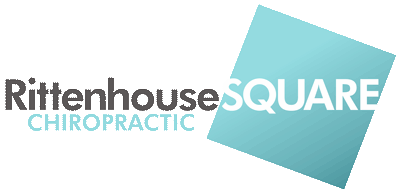Temporomandibular Joint Disorder (TMJD) can be a debilitating condition, characterized by pain, stiffness, and dysfunction in the jaw joint and surrounding muscles. While traditional medical approaches such as medication and physical therapy are commonly used to address TMJD symptoms, an alternative option that has gained attention is chiropractic care. Chiropractors, spinal health, and alignment specialists offer a unique perspective on TMJD treatment. We’ll explore the potential benefits of chiropractic care for TMJD patients, examining how it may relieve and enhance the overall quality of life for those with this often-persistent condition.
What is TMJD?
Temporomandibular Joint Disorder (TMJD) is a complex and painful condition affecting the temporomandibular joint, which connects the jawbone to the skull. This joint is crucial in everyday activities such as speaking, chewing, and yawning. TMJD is characterized by a range of distressing symptoms, including jaw pain, facial discomfort, headaches, and difficulty in opening or closing the mouth. These symptoms can significantly impact an individual’s quality of life, making simple tasks like eating or talking a source of discomfort and frustration.
The exact cause of TMJD can vary among individuals. Still, it often results from a combination of factors such as jaw injury, excessive teeth grinding or clenching (bruxism), misalignment of the jaw or teeth, stress, or even arthritis. Due to its multifaceted nature, diagnosing and treating TMJD can be challenging, and healthcare professionals often employ a multidisciplinary approach to address the condition comprehensively. While conventional treatments like pain medication, physical therapy, and dental appliances are commonly used to manage TMJD symptoms, some individuals seek alternative therapies, including chiropractic care, to find relief and improve their overall well-being.
Chiropractors approach TMJD from a unique perspective. They believe that spinal misalignments can contribute to jaw issues and TMJD symptoms. By focusing on the alignment of the spine and its impact on the nervous system, chiropractors aim to address the localized symptoms and the root causes of TMJD.
Chiropractic Approach to TMJD
The chiropractic approach to Temporomandibular Joint Disorder (TMJD) differs significantly from traditional medical treatments. Chiropractors focus on the spine and its influence on the nervous system as a central component of their approach. While conventional medical treatments for TMJD often involve pain management and dental appliances, chiropractic care seeks to address the underlying structural issues that may contribute to TMJD symptoms.
Chiropractors perform thorough assessments of TMJD patients, including evaluating the patient’s spinal alignment, assessing posture, and identifying any muscle tension or imbalances contributing to jaw pain and dysfunction. Based on their findings, chiropractors develop individualized treatment plans that may involve spinal adjustments, soft tissue manipulation, and specific exercises to restore proper alignment and function to the spine and surrounding muscles. This holistic approach aims to alleviate not only the immediate symptoms of TMJD but also the underlying causes.
One of the key principles of chiropractic care for TMJD is the belief in the body’s innate ability to heal itself when properly aligned and functioning. By restoring balance to the spine and nervous system, chiropractors aim to promote overall wellness and help patients find relief from the discomfort and limitations caused by TMJD.
Spinal Alignment and TMJD
Spinal alignments are crucial in the chiropractic approach to addressing Temporomandibular Joint Disorder (TMJD). When the spine is misaligned, it can lead to disruptions in nerve communication, potentially contributing to TMJD symptoms such as jaw pain, muscle tension, and discomfort.
The connection between spinal misalignment and TMJD lies in the intricate network of nerves that run through the spine and communicate with the muscles and joints involved in jaw movement. When the spine is out of alignment, it can create tension and dysfunction in the surrounding muscles, affecting the balance and movement of the jaw joint. Chiropractors use manual adjustments and techniques to realign the spine to restore proper nerve function and alleviate the muscle tension that may exacerbate TMJD symptoms.
Chiropractic adjustments for TMJD typically focus on the cervical and upper thoracic spines, as these areas have direct connections to the jaw and facial muscles. By addressing spinal misalignments in these regions, chiropractors aim to reduce the stress and strain on the temporomandibular joint and associated structures. This holistic approach targets symptom relief and addresses the root causes of TMJD, aiming to improve overall jaw function and comfort.
It’s important to note that chiropractic care for TMJD is often part of a comprehensive treatment plan that may include lifestyle modifications, exercises, and other therapies. The effectiveness of chiropractic adjustments in managing TMJD symptoms can vary from person to person, and it’s essential for individuals with TMJD to consult with a qualified chiropractor to determine if this approach is suitable for their specific condition and needs.
Chiropractic Techniques for TMJD
Chiropractic techniques for Temporomandibular Joint Disorder (TMJD) involve a range of approaches aimed at addressing spinal misalignments, muscle tension, and nerve dysfunction that may contribute to the symptoms. Chiropractors tailor their treatments to each patient’s specific needs. These techniques aim to alleviate jaw pain, restore proper jaw joint function, and promote overall well-being. While the specific approach may vary from one chiropractor to another, here are some common chiropractic techniques used in the management of TMJD:
- Chiropractic Adjustments: Chiropractors perform manual adjustments to realign the spine around the cervical and upper thoracic spine. These adjustments reduce muscle tension surrounding the jaw joint and restore proper nerve function.
- Muscle Release Techniques: Chiropractors may use muscle release techniques like trigger point therapy to address muscle tension and tightness in the jaw and surrounding areas. These techniques help alleviate pain and discomfort associated with TMJD.
- Exercise and Stretching: Chiropractors often prescribe specific exercises and stretches to TMJD patients to improve jaw function, strengthen supporting muscles, and maintain the benefits of chiropractic adjustments.
- Lifestyle and Ergonomic Advice: Chiropractors provide guidance on lifestyle modifications and ergonomic improvements that can reduce the strain on the jaw joint. This may include recommendations for posture correction and stress reduction techniques.
- Dietary and Nutritional Guidance: Some chiropractors offer dietary and nutritional advice, as certain foods and nutritional deficiencies can contribute to TMJD symptoms.
- Home Care Instructions: Patients may receive instructions on self-care techniques, including jaw exercises, relaxation exercises, and self-massage to manage TMJD symptoms between chiropractic appointments.
- Joint Mobilization: Chiropractors may employ gentle joint mobilization techniques to enhance the range of motion in the temporomandibular joint, reducing pain and promoting better function.
These chiropractic techniques are often combined to provide a holistic and personalized approach to TMJD management. It’s essential to consult with a qualified chiropractor to determine the most appropriate treatment plan for your specific TMJD condition.
Benefits and Considerations:
When considering chiropractic care as part of your TMJD management plan, weighing the potential benefits against important considerations is essential. Chiropractic care can offer several advantages for TMJD patients, but it’s not without its limitations. Here are some benefits and considerations to keep in mind:
- Non-Invasive Approach: Chiropractic care for TMJD is non-invasive and doesn’t involve surgery or prescription medications. This appeals to individuals who prefer natural and drug-free treatments.
- Pain Relief: Chiropractic adjustments and soft tissue therapies can relieve TMJD-related pain, including jaw pain, headaches, and neck discomfort. Many patients report reduced pain levels after undergoing chiropractic care.
- Improved Joint Function: Chiropractic techniques can enhance the range of motion and function of the temporomandibular joint, potentially leading to better jaw movement and reduced clicking or popping sensations.
- Individual Variability: It’s essential to recognize that the effectiveness of chiropractic care can vary from person to person. While some individuals may experience significant relief, others may not respond as well. Your specific case and the severity of your TMJD symptoms will influence the outcomes.
- Complementary Approach: Chiropractic care is often most effective with other TMJD management strategies, such as physical therapy, dietary modifications, and stress management. Discuss with your healthcare team how chiropractic care can fit into your overall treatment plan.
- Consultation and Assessment: Before pursuing chiropractic care, it’s crucial to consult with a qualified chiropractor who can conduct a thorough assessment and discuss your medical history. They will determine if you are a candidate for chiropractic treatments and create a personalized plan tailored to your needs.
By carefully considering the potential benefits and working closely with a knowledgeable chiropractor, individuals with TMJD can decide whether chiropractic care should be a part of their holistic approach to managing their condition.
Contact Rittenhouse Square Chiropractic
If you’re seeking chiropractic care for TMJD relief or have questions about how chiropractic techniques can be integrated into your management plan, contact Rittenhouse Square Chiropractic. Our experienced chiropractors specialize in personalized care to address musculoskeletal issues, including TMJD. We offer comprehensive assessments, tailored treatment plans, and a commitment to improving your overall well-being. Contact us today to schedule a consultation and take the first step toward a pain-free and more comfortable life with TMJD.

